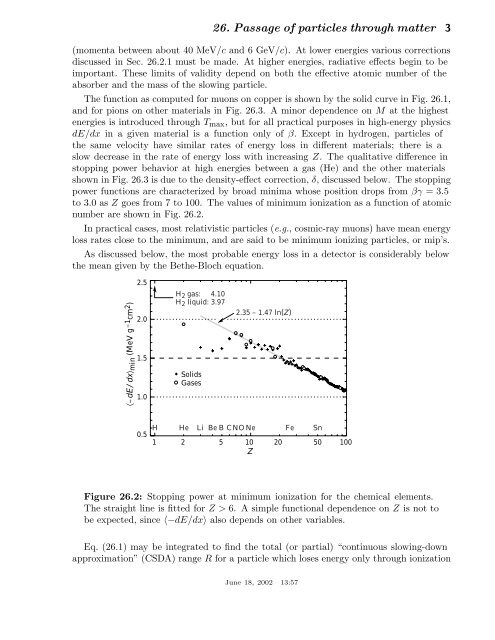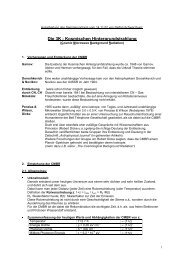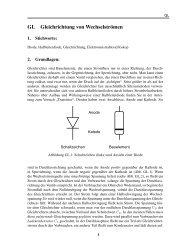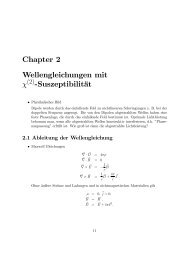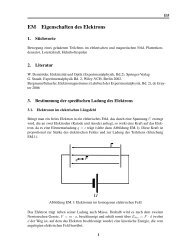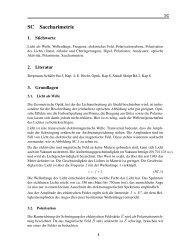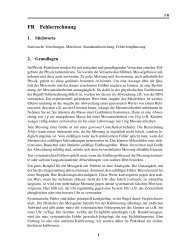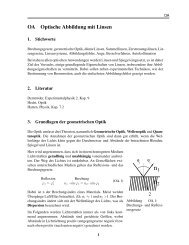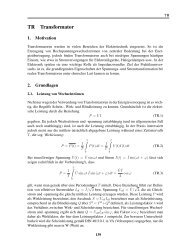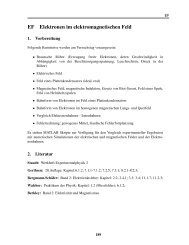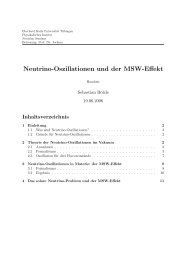26. passage of particles through matter - Particle Data Group
26. passage of particles through matter - Particle Data Group
26. passage of particles through matter - Particle Data Group
Create successful ePaper yourself
Turn your PDF publications into a flip-book with our unique Google optimized e-Paper software.
<strong>26.</strong> Passage <strong>of</strong> <strong>particles</strong> <strong>through</strong> <strong>matter</strong> 3<br />
(momenta between about 40 MeV/c and 6 GeV/c). At lower energies various corrections<br />
discussed in Sec. <strong>26.</strong>2.1 must be made. At higher energies, radiative effects begin to be<br />
important. These limits <strong>of</strong> validity depend on both the effective atomic number <strong>of</strong> the<br />
absorber and the mass <strong>of</strong> the slowing particle.<br />
The function as computed for muons on copper is shown by the solid curve in Fig. <strong>26.</strong>1,<br />
and for pions on other materials in Fig. <strong>26.</strong>3. A minor dependence on M at the highest<br />
energies is introduced <strong>through</strong> T max , but for all practical purposes in high-energy physics<br />
dE/dx in a given material is a function only <strong>of</strong> β. Except in hydrogen, <strong>particles</strong> <strong>of</strong><br />
the same velocity have similar rates <strong>of</strong> energy loss in different materials; there is a<br />
slow decrease in the rate <strong>of</strong> energy loss with increasing Z. The qualitative difference in<br />
stopping power behavior at high energies between a gas (He) and the other materials<br />
shown in Fig. <strong>26.</strong>3 is due to the density-effect correction, δ, discussed below. The stopping<br />
power functions are characterized by broad minima whose position drops from βγ =3.5<br />
to 3.0 as Z goes from 7 to 100. The values <strong>of</strong> minimum ionization as a function <strong>of</strong> atomic<br />
number are shown in Fig. <strong>26.</strong>2.<br />
In practical cases, most relativistic <strong>particles</strong> (e.g., cosmic-ray muons) have mean energy<br />
loss rates close to the minimum, and are said to be minimum ionizing <strong>particles</strong>, or mip’s.<br />
As discussed below, the most probable energy loss in a detector is considerably below<br />
the mean given by the Bethe-Bloch equation.<br />
〈–dE/dx〉 min (MeV g –1 cm 2 )<br />
2.5<br />
2.0<br />
1.5<br />
1.0<br />
H 2 gas: 4.10<br />
H 2 liquid: 3.97<br />
Solids<br />
Gases<br />
2.35 – 1.47 ln(Z)<br />
0.5<br />
H He Li Be B CNONe Fe Sn<br />
1 2 5 10 20 50 100<br />
Z<br />
Figure <strong>26.</strong>2: Stopping power at minimum ionization for the chemical elements.<br />
ThestraightlineisfittedforZ>6. A simple functional dependence on Z is not to<br />
be expected, since 〈−dE/dx〉 also depends on other variables.<br />
Eq. (<strong>26.</strong>1) may be integrated to find the total (or partial) “continuous slowing-down<br />
approximation” (CSDA) range R for a particle which loses energy only <strong>through</strong> ionization<br />
June 18, 2002 13:57


